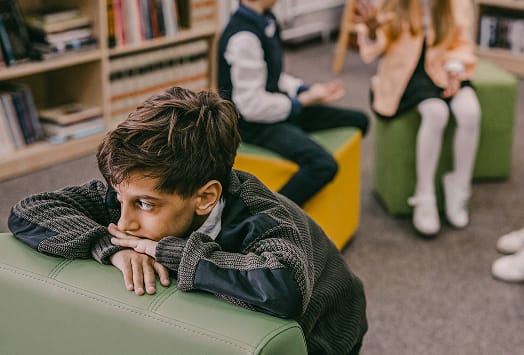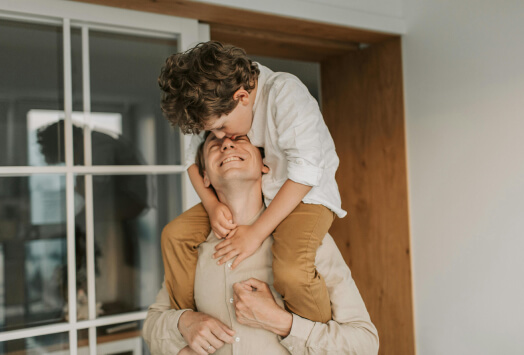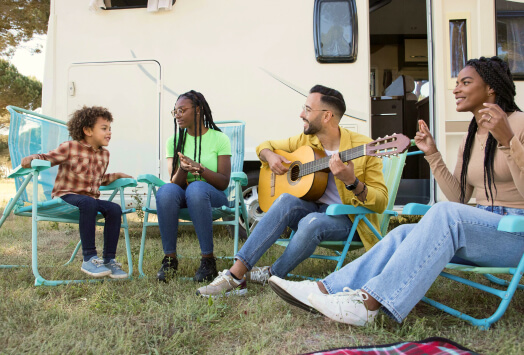Children notice physical differences well before they notice other types of differences. A child would very readily notice someone walking with a seeing eye dog or using a walker before they notice a child on the autism spectrum or with an overall less physical difference.
The reaction and language that adults use when their child points out that a person looks different or is using an unfamiliar adaptive device needs to be both validating and normalizing.
Instead of focusing on things like, “Don’t point, it’s rude” and/or shushing your child, you can normalize your child’s observation. Try saying something like:
“Yes, you noticed that that child is walking with a walker. That’s how he gets around.”
It’s your tone as well as the words you choose that let’s your child know that their observation is correct, they noticed something different, AND that that is OK. You can say:
“It’s OK that the child is using a seeing eye dog to help him get around. Some people walk, see, read, communicate, and move differently than others and that’s fine. In fact, it’s just part of how things are.”

Listening to and sharing the voices of people with differences is so important when considering how best to talk about people with physical differences. The most valuable information in this conversation are those of people with disabilities as well as parents of children with physical disabilities. So, I’ll start with some advice from them:
Hannah Fox, a mother of a child born with a congenital limb difference, explains that “Squelching curiosity leads to fear and separation. Our failure to teach children to ask questions about something or someone that is different leads them to be afraid of the unknown. Then they become adults who stare or say unkind (even ignorant) things.”
Marie Dagenais-Lewis, a disabled artist and disability rights advocate gives this advice: “Parents should stay clear from any euphemisms like ‘special needs’ or ‘differently abled.’ Euphemisms like that are actually deeply rooted in ableism, as it doesn’t truly address disability.” In fact, many disabled people advocate for the use of identity-first language (“autistic person”), rather than person-first language (“person with autism”).
Likewise, Kristine Napper, a disabled teacher and author, recommends keeping disabilities neutral. She says, “One thing I say a lot when I’m talking to kids is, ‘Disability isn’t a good thing or a bad thing — it’s just a thing. It’s value neutral’”.
Charlie Beswick, the mom of a child with a rare cranio-facial condition explains that the earlier the better for these conversations. She says, “There is no right or wrong age for this, as it very much depends on your own child, but once they are able to understand the difference between boys and girls, then I think it’s a good time to talk about other differences.”
You can even show them pictures and videos of children and adults with physical differences so they are not surprised when they inevitably meet someone who looks different from them in public. Keep reading for some of my favorite books, TV shows, and toys that feature physical diversity.
More ways parents can support their child’s understanding of people with physical a differences
Start with micro conversations
Like with all tricky conversations, topics are best shared and understood in bits. There’s no “big talk” like the birds and the bees. Instead, it is best to relay things over time based on what your child is asking and what they are developmentally ready to understand. It’s fine over time to have these little chats, in the moment, as things come up.
You can see a veteran walking with a prosthetic leg and a cane and, when you notice your toddler staring, say, “You notice he has a stick to help him walk.” If they notice the leg too you can validate it, “Yes, he has a special leg called a prosthetic leg. That’s how he gets around.” And leave it at that.
Understand where observation is different from fear
A child may simply be noticing a difference and want to know how typical something is or why a person is using a given adaptive device. That’s different from a fear for their own bodily integrity or that of their parents. Think about what your child is asking and why before responding. Are they scared? Or are they just asking for basic information?
Heavy reassurances imply that something is wrong with a person moving with a wheelchair or walking with a walker. The focus that needs to be relayed should center on making the world more accessible for people with differences at every step of everything that is being developed. That starts with us educating kids that inclusion is important and that people with differences aren’t disabled but in fact that they are quite able in many ways and that it’s up to others to make everything else more accessible.
Show diversity in books, toys, and other media
Include books, TV shows, and toys on your children’s shelves that show diverse representations. Here are some of my favorites:
- Plastic play figurines that include children and adults with walkers and wheelchairs, such as these Lakeshore play people.
- Dolls with Down syndrome facial features like the lovely ones made by Miniland.
- Books like Susan Laughs that depict a child as totally normal and “just like us” until the last page where it becomes obvious that she gets around in a wheelchair, and This is Ella, all about a young girl named Ella with Down syndrome who is starting school.
- Videos and shows like Daniel Tiger’s Daniel’s New Friend Max, where Daniel makes an autistic friend, Mr. Rogers’ A Visit with a Boy in a Wheelchair, and Hop, a new show on Max Family which features a frog with one leg shorter than the other.

In short, the best thing you can do to support your child as they navigate the world is be open with them. Children learn from us: Not just what we say, but also how we say it and what we do. If you see someone with a physical difference or disability, model the behavior you want your child to learn. Treat them with respect and kindness. You got this!

















